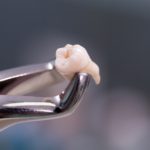A longitudinal tooth fracture is a fracture that occurs along the vertical lines of a tooth from the crown towards the root or vice versa. Longitudinal fractures are classified into five different types which dictate the severity of the fracture from the mildest to the most extensive type.
There are different methods to detect or diagnose a longitudinal tooth fracture, and they include, trans-illumination, wedging, staining, dental history and radiography. The five types of longitudinal fractures in order of severity and their possible treatment options are as follows:
Craze lines
Craze lines are the least severe type of longitudinal fractures and are also quite common as people age. They are mere cracks that occur on the surface of the crown enamel due to abrasion or deterioration over time. Also known as hairline cracks, craze lines are hardly ever noticed and may not need any sort of treatment if proper oral hygiene is observed. If you are, however, bothered by them, you can opt for professional whitening or at-home whitening kits to improve their appearance.
Fractured Cusp
This is a fracture which occurs on the cusp of the tooth and is also a common type of longitudinal fracture. It does not extend to the dentine and might not cause any pain if treated well. Like craze lines, a fractured cusp may only need mild treatment such as whitening but treatment is not really necessary. For prevention, avoid invasive habits such as nail-biting, eating hard ice and teeth grinding as these are likely to extend the fracture and cause a cracked tooth, which is the third type of fracture.
Cracked Tooth
A cracked tooth will need immediate dental care because it extends to the gum line. A dentist will need to examine the tooth to determine the extent of the fracture and recommend the most appropriate treatment. Treatment will vary depending on the severity of the crack. For a minor crack, a minor dental restoration can be done while for a severe crack, crowns, implants, root canal or even extraction is applied.
Split Tooth
In this type of fracture, the crack extends beyond the gum line towards the root of the tooth and may divide your tooth into two parts, thus the name ‘split’ fracture. This type of fracture is usually painful and full dental restoration may be futile. Instead only a section of the tooth may be restored and a crown applied to restore the appearance of the tooth. In most cases, if the tooth is not visible, the dentist will recommend extraction.
Vertical Root Fracture
Classified as the most severe kind of fracture, a vertical root fracture occurs from below the gum line towards the crown. This kind of fracture is likely to cause an infection if not detected early enough. For vertical root fracture, extraction is usually the only treatment option but more research is still being done to find possible restoration options.
Bottom Line
Visit Carrum Downs Dental Clinic to learn more about longitudinal tooth cracks and fractures and get the most suitable treatment options for your longitudinal tooth fracture issues.
Related Posts


